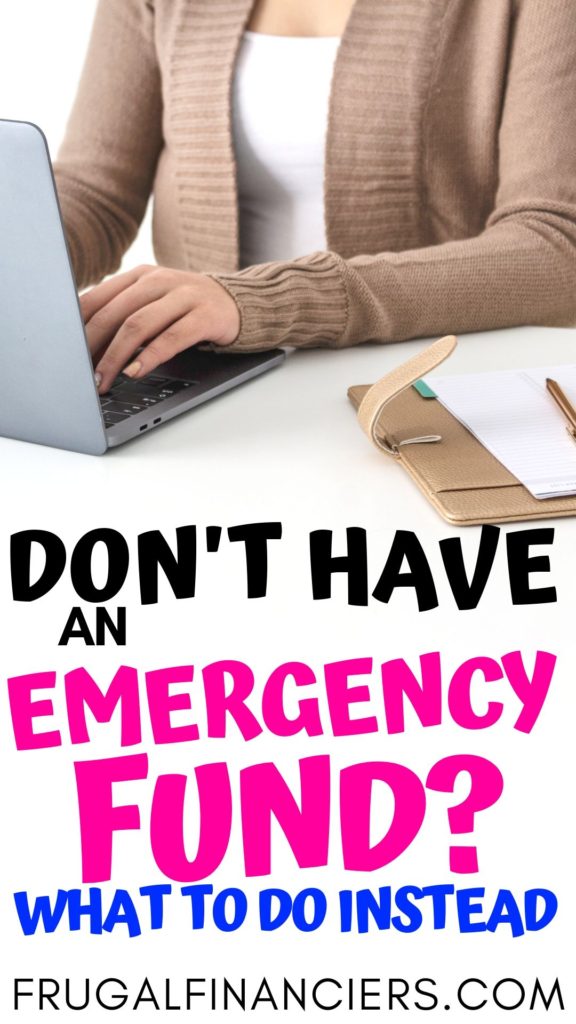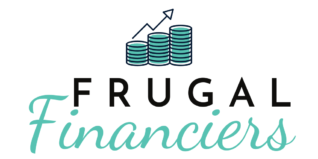A financial emergency can happen anytime and anywhere.
And, if you can’t or don’t want an emergency fund, it is still smart to have an emergency financial plan.
Financial emergencies can range in time and cost.
From your car breaking down to losing your job, it can be a one-time event or an extended period of time.
Or, if you lose or need to quit your job, how you’re going to cover you normal expenses but without any income.
It is a very tough situation to be in, regardless of the circumstances.
That’s why so many people recommend having an emergency fund.
But, an emergency fund requires you to save up money and it does come at a cost.
Check out 3 Hidden Costs of an Emergency Fund for more information.
So, what do you do if you can’t save up for an emergency fund or you could use the money for better purposes?
A emergency financial plan is completely free.
Better yet, with an emergency financial plan, you may even end up saving some money.
With the plan, you’ll know the best course of action.
This may prevent
The first step for creating a plan is knowing the unexpected expenses you may face in an emergency.
Identifying Unexpected and Emergency Expenses
We’ve already discussed a couple of the expenses you may face in a financial emergency.
But, you should have an idea of unexpected expenses that are common.
How much would it cost you to buy a “new-to-you” car?
What
What are the annual deductibles on your home (or renters) and auto insurance?
How much are your monthly or quarterly essential expenses?
Unless you have potential exposure to large medical costs, the most expensive emergency is losing or having to quit your job.
Since the costs can greatly vary between emergencies, it is a good idea to have two types of emergency plans.
One for one-time unexpected expenses and another for prolonged times of financial hardship.
Having a Plan for One-Time Unexpected Expenses
One-time expenses are going to be those emergencies that may blow-up your credit card or require you tapping into your savings.
But, you’ll be able to recover quickly.
Still, if you can plan for these expenses, you may be able to reduce how much you pay in interest on your credit card or need to take out of retirement savings.
There are probably emergencies out there that are greater but a conservative place to start is $5,000.
There are plenty of financial emergencies that are less than $5,000.
But, it’s good to have a larger target so that you’ll have a plan even if it’s unlikely.
Having a Plan for An Extended Period of Time
You also want to have a financial emergency plan for those disruptions to your income or expenses that are not one-time.
Two more-common types of prolonged emergencies are loss of your job or an illness in your family.
With the loss of the job, you may no longer have enough income to cover your basic expenses.
Meanwhile, illness or health-related emergencies may cause additional costs from medicine and doctor visits.
It could also cause you to lose income from having to take time off from work.
A conservative but reasonable place to start is around six months of essential expenses.
A survey by Randstad found that job applicants searched for a job for five months.
Still, this is going to vary quite a bit for a family with children versus just a couple or
That’s why it’s important to understand your basic expenses.
Most basic expenses like rent, insurance,
You may be able to bring down some costs for things like food and transportation.
But, you’ll see that most of your essentials expenses have a minimum amount.
Write down all of your essential expenses and calculate how much money you would need to survive six months without income.
For more on this, check out How to Categorize Your Expenses.
Create a Plan for Quickly Cutting Expenses
It is also worthwhile writing down all of your subscriptions that are not essential.
When you have all of these written down in your financial emergency plan, you can quickly contact and cancel all of your subscriptions.
That way, if your emergency is prolonged, you don’t have to worry about incurring extra expenses.
How Are You Going to Pay for Your Emergency?
Now that you have an idea of how much an unexpected expense or financial hardship may cost, it’s time to figure out how you’re going to pay for the emergency.
If you don’t have an emergency fund, the first place you may look for quick cash is a credit card or your retirement savings.
Using a Credit Card
The difficult part of using your credit card is that using the money comes with a high
You do have some time repay the balance but it may not be enough time to repay all of the balance.
Still, it is worth exploring.
With a credit card, you have the statement period and the due date of the payment.
Whatever the balance is on the last date of the statement period is the amount due to fully repay the balance.
If you don’t fully repay the balance amount due, you’ll have to pay interest on the remainder after you payment.
You should write down a list of the end dates of your credit card’s statement periods as well as the due date of the monthly payment.
Here’s an example:
The last day of the statement period is the 1st of each month and the payment due date is the 15th.
With this example, you know that at worst you’ll have 15 days to repay the balance if the payment is charged on the last day of the statement period.
In a best case scenario, you’ll have 45 or so days to repay the balance.
For a smaller unexpected expense, you may be able to create a plan where you use your credit card.
In this case, you would probably have to forego some (or a lot of) non-essential expenses to repay the balance before it comes due.
You may also be able to open a new credit card that has 0% interest for a period of time.
This can be useful if you have cut down on expenses long enough to pay off the unexpected expense.
Sometimes, you just need additional time to pay off an emergency-related expense.
But, you have to be careful with credit cards because you can end up paying a lot to hold a balance on credit card.
Almost all credit cards charge above 10% and many cha
At 12%, a $1,000 balance will incur around $10 of interest every month.
It’s $20 every month for 24%.
It may not seem like much but i can quickly turn a $1,000 emergency into a $1,250 or even $1,500 emergency.
Using a Retirement Account to Cover Emergency Expenses
People will typically tap into their retirement savings early if they have an emergency so that they do not have to pay high-interest on their credit cards.
But, if you pull from the wrong type of retirement plan or account you’ll end up paying penalties and taxes.
For plans and accounts like the 401(k) plan and traditional IRA, you could face a penalty for withdrawing money as well as taxes.
With a Roth IRA, you can withdraw any contributions you’ve made but not any investment returns.
For example, if you put $5,000 into a Roth IRA and it grows to $5,550, you can still only withdraw the original $5,000 contributed.
If you withdraw the other amount before 59.5 you could again face penalties and taxes.
You also lose out on potential investment returns if you have to take out the money to cover an emergency.
Using an HSA for Health-Related Emergencies
If you have a high deductible high premium health insurance plan and qualify, you can open a health savings account (HSA).
The HSA can be a great way to still invest your money but also have money for a medical emergency or just medical expenses in general.
With an HSA, money contributed can be invested.
The account serves as a way to put hold money for medical expenses.
And, at age 65 you can use money in an HSA account for anything penalty-free.
Asking Friends or Family for Money
If you believe that you can pay them back, you may want to ask friends or family for money.
You could even take the time right now to set up an agreement between you and another person.
You’ll help them if they face financial emergency and they’ll help you.
This can be a great way to not only protect yourself in case of financial emergency but also help someone else out.
Unemployment Income
If you do lose your job, you may qualify for unemployment income.
Be sure to check how much you may receive if you had to apply for unemployment.
Each state is different but you should be able to calculate how much you’ll receive.
This can go a long way, covering your basic expenses while you search for a new job.
Time to Map Out Your Plan
Now that you know some of the common ways to pay for unexpected and emergency expenses it’s time to create a plan.
Create a timeline for ensuring a one-time expense and then paying off that expense.
If you have to repay a credit card or retirement account, put this into your time line as well.
For a prolonged emergency, you can also create a plan for monthly expenses.





Leave a Reply
Your email is safe with us.
You must be logged in to post a comment.